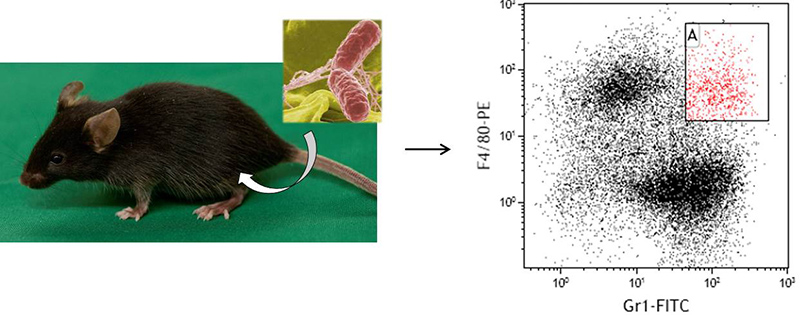Salmonella enterica causes various diseases including food poisoning and typhoid fever. We provide a mouse model of infectious disease using Salmonella enterica to test antibacterial agents and potential therapeutics. Furthermore, immunomodulatory / immunotoxic effects of test substances can be revealed by infecting mice with a sublethal dose of Salmonella enterica and simultaneous exposure to the test substance. Mice can also be infected with a median lethal (LD50) infection dose to determine the impact of test substances on mortality. The model can thus be used as therapy and / or toxicity model.
Mouse model for infectious disease (GLP-like / GLP)
Species
Mouse
Fields of application
- Diagnosis and therapy model for infections with Salmonella enterica
- Testing of antibacterial agents and potential therapeutics
- Testing of immunomodulatory / immunotoxic substances
- Evaluation of application/treatment protocols for therapeutic agents
- Efficacy and safety studies for drug approval (non-GLP and GLP)
Endpoints / outcome parameters
- Survival rate
- Cytokine / antibody status in serum
- Bacterial burden in peritoneum and different organs
- Phenotyping of infiltrating inflammatory cells in spleen, lymph nodes and peritoneum
- Functional activity of different immune cell subtypes (phagocytosis, NO production, cytokine / antibody response etc.)
Readout parameters
- Daily evaluation of clinical symptoms
- Periodic blood sampling
- Flow cytometric analysis / cell sorting / imaging flow cytometry
- ELISA / multiplex analysis
- Quantitative real-time PCR
- Histology
- Immunohistochemistry / immunofluorescence
Quality management and validation
- Internal quality management (certified GLP test facility)
- Use of reference compounds (standard-of-care therapies)
- Randomisation
- Blinded induction / data acquisition and analysis
- Biometric expertise
